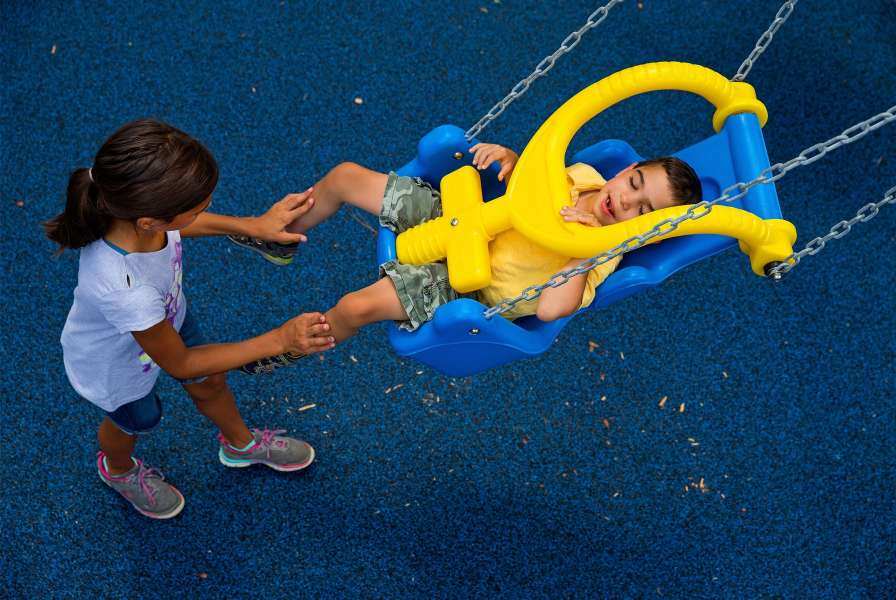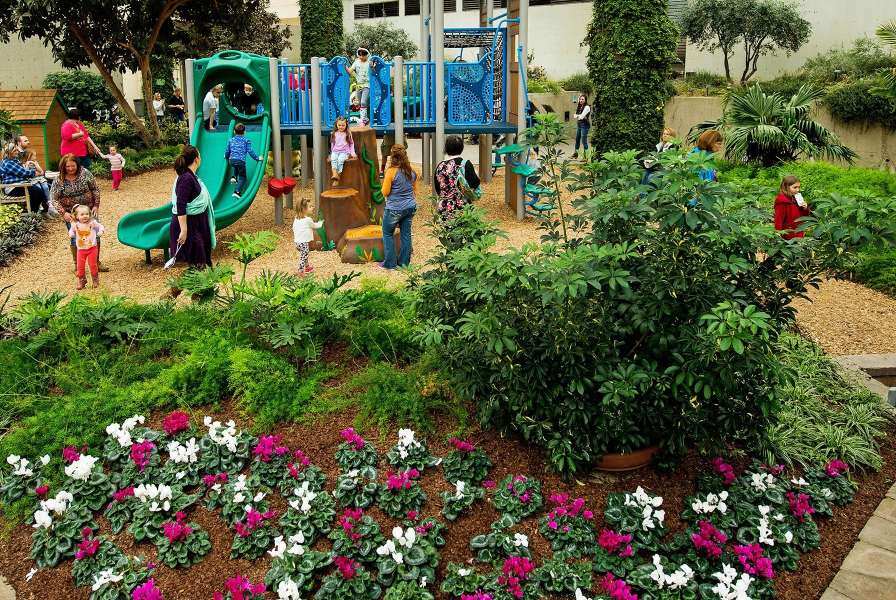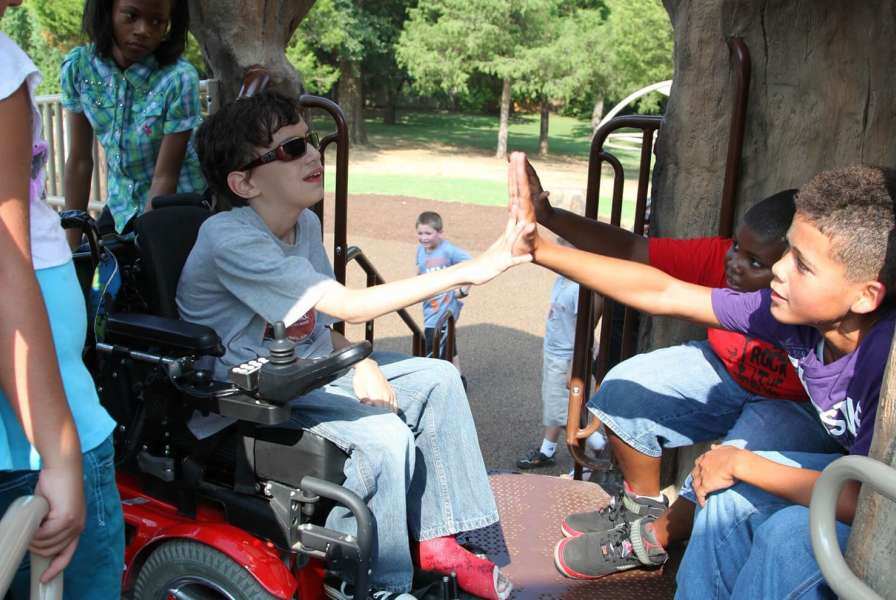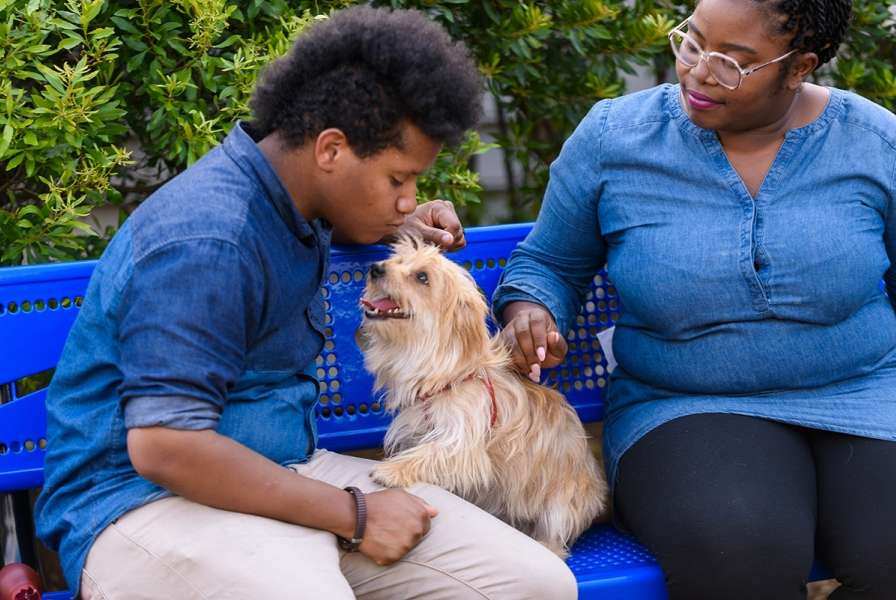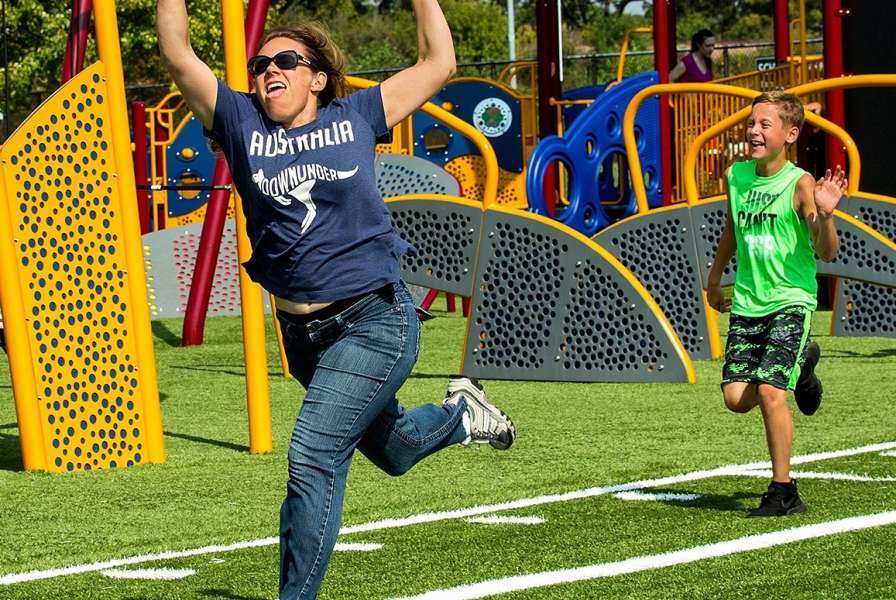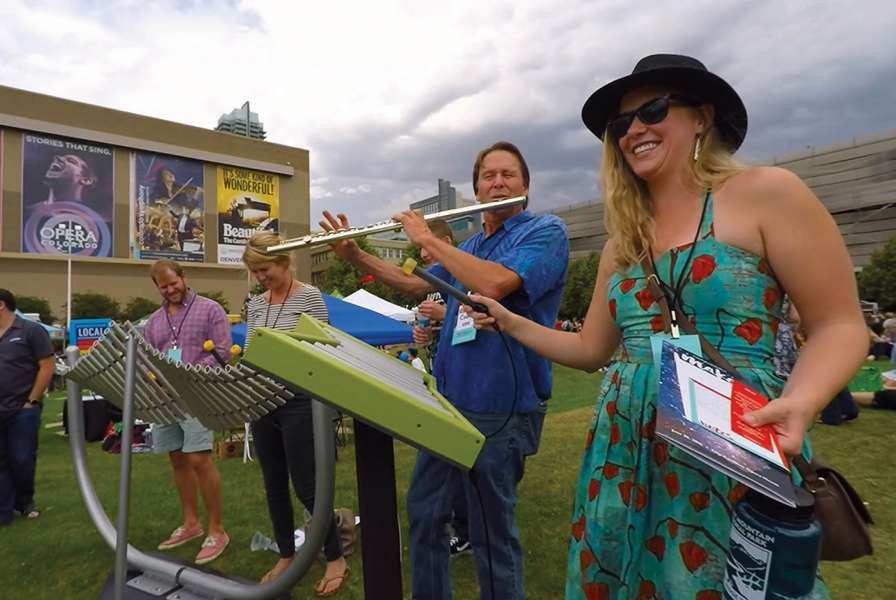Children have the right to play, to interact with their peers, and to challenge themselves physically, mentally, and socially. While no one would consciously exclude children from enjoying this right, the design of playgrounds can unintentionally hinder children with disabilities from participating. Continually faced with barriers to participating, children with disabilities are much more likely to experience fewer opportunities to interact and engage in developmentally necessary activities, leading to developmental delays, increased dependence on others, decreased motivation, lack of assertiveness, poorly developed social skills, and lower self-esteem. The environment of childhood can be a very big contributor to these secondary disabilities.
Playgrounds designed according to the 7 Principles of Inclusive Playground Design support opportunities for children with disabilities to engage in developmentally beneficial experiences. Children who play in inclusive settings are also healthier, have higher self-esteem, and are better prepared to learn. It may not always be easy for children to interact with one another, especially when their peers are different from them, however, when the play setting does not require children to make significant changes in their play in order to include each other, it is more likely that children of all abilities will play together.
Inclusively designed playgrounds not only support developmental benefits for children with disabilities, but they also support crucial learning opportunities for children of all abilities. Interacting with their peers of all abilities, children learn that everyone has similarities and differences. They learn about tolerance, diversity, and acceptance. These inclusive environments also allow inter-generational play, as parents and grandparents with physical, mental, or social challenges have the opportunity to interact and play with their children (Hansen, 2017).
"An inclusive playground shows that everyone has value. It teaches children that everyone can be together. When kids are able to play and see a child in a wheelchair having fun, to see what they can do, it changes their perception. This type of interaction moves feelings from pity to understanding and it makes a better world." Laurie Schulze, a mother of a child with Cerebral Palsy
Building an inclusive playground may seem daunting, but there are many resources to guide one through the process:
- Begin in your own community and think of the places to play currently available to children. How inclusive are they now, and can they be adapted to be more inclusive?
- Talk to parents, educators, therapists, and especially the children to understand what would be the most effective play environment for those who live in the community.
- Utilize resources that are available to help with design and programming.
- Begin creating ownership and investment in the project to help it gain the momentum to come to fruition.
- Engage with your local playground design professionals, who can offer suggestions and assistance.
- Work with the people in your community, both with and without disabilities, who may have fears and misperceptions that need to be addressed and corrected.
- Plan community events at the playground to properly educate the public, or organize playgroups from the local schools to provide opportunities for children of all abilities to get to know one another and play together.
Creating understanding and trust between members in the community is crucial in helping people reap the full benefits of an inclusive playground (Ocken, 2018).
Communities across the country are recognizing the value and need for inclusive playgrounds. This awareness has created a powerful energy among people to make a difference, and help children of all abilities enjoy their right to play!
--
By Keith Christensen, PhD, Center for Persons with Disabilities Faculty Fellow, Utah State University
Dr. Keith Christensen earned a master's degree in landscape architecture and a doctorate in disability studies. He is a Faculty Fellow with the Center for Persons with Disabilities and an associate professor of the Department of Landscape Architecture and Environmental Planning at Utah State University. Keith directs the Beyond Access program which advocates for the planning and design of socially inclusive play environments.
Sources:
Hansen, R. (2012). Let’s Play: The Importance of Inclusive Playgrounds. Retrieved January 26, 2018, from https://www.rickhansen.com/Our...
Ocken, J.R. (2018). Let’s Play Together! How Inclusive Playgrounds Benefit Everyone. Retrieved January 26, 2018, from http://recmanagement.com/featu...
